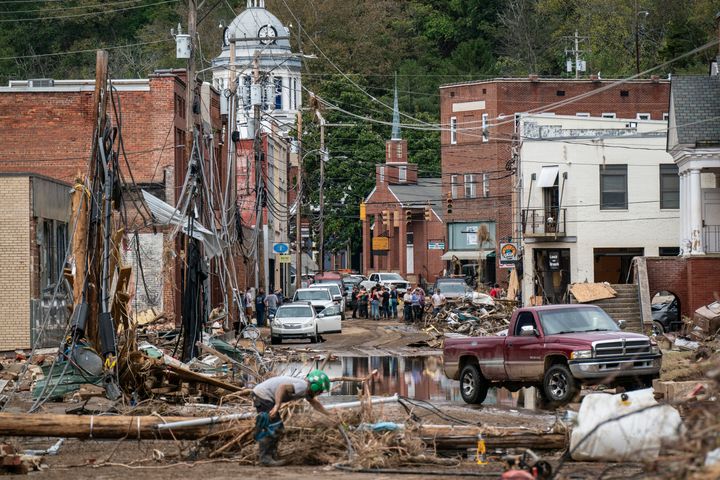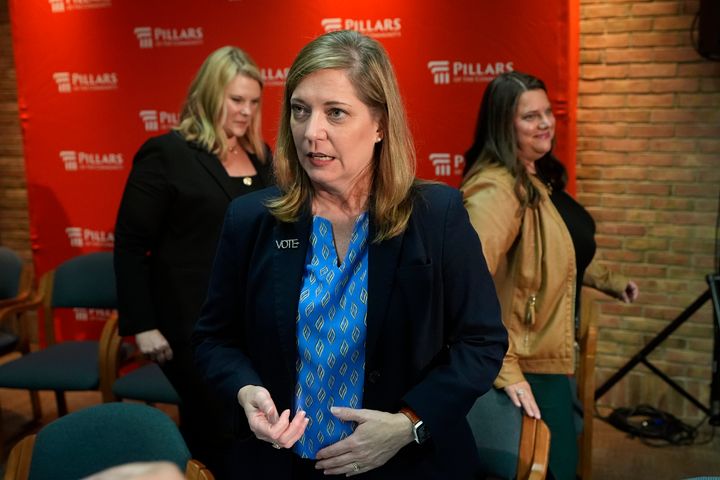Hurricane Helene left a path of destruction as it moved across a string of Southern U.S. states last week, with an untold amount of property damage and at least 100 people dead. The vast devastation caused by the storm has left many without food and water, or cut off from medical care. Among the logistics issues imposed by the hurricane is one that may not seem immediate, but carries significant consequences: the new struggle for election officials to ensure affected voters can cast their ballots in the Nov. 5 election.
Election officials had already stated concerns about the delivery of mail ballots by the Postal Service in a letter made public on Sept. 11. That letter noted that the Postal Service’s consistent failure to deliver mail on time and the non-standardized use of postmarks across the country could lead to the rejection of properly cast mail ballots in November.
“Over the course of the last year, election officials across the country have raised serious questions about processing facility operations, lost or delayed election mail, and front-line training deficiencies impacting USPS’s ability to deliver election mail in a timely and accurate manner,” the letter from the National Association of State Election Directors, the National Association of Secretaries of State and 29 local election official associations said.
Those issues are now compounded by Helene’s destruction as thousands may be displaced for an extended period of time, polling locations may be damaged or unreachable, and mail delivery to affected areas is suspended.
Adding to the complications is the fact much of the damage is in battleground states like North Carolina, where relatively small numbers of voters could have an outsize impact on election results.

Mountain communities in western North Carolina were hit particularly hard as floods and mudslides destroyed homes and infrastructure and left some towns completely isolated. More than 450,000 people are reported to be without power, and some areas, including the city of Asheville, are experiencing cell service and broadband internet outages. The Postal Service has already announced a halt to mail delivery to homes and businesses in dozens of ZIP codes across the western part of the state, with no indication of when it might return. Mail ballots went out to voters in North Carolina on Sept. 24 and early in-person voting begins on Oct. 17.
“This storm is like nothing we’ve seen in our lifetimes in western North Carolina,” Karen Brinson Bell, executive director of the North Carolina State Board of Elections, said at a press conference on Tuesday.
The election is fast approaching, and North Carolina is one of just seven swing states expected to decide the outcome of the presidential race between Vice President Kamala Harris and former President Donald Trump. Emergency measures will be needed to ensure that everyone in the affected areas can vote. That could mean relocating polling locations where previously designated sites are either unusable or inaccessible. Emergency rules also provide an exemption from the state’s voter identification law during natural disasters — in case a voter lost their ID — providing they cast a provisional ballot and swear in an affidavit to be who they say they are.
North Carolina election law allows the board of elections to exercise emergency powers in the case of a natural disaster, as declared by either the president or the governor, in order to ensure that elections in affected counties are properly conducted.
The five-member board exercised those powers on Monday during an emergency meeting, in a unanimous vote that authorized county election boards to reschedule mandatory Tuesday meetings where they review absentee ballots.
“This is the first of what are likely many actions in response to this storm,” Brinson Bell said.
The board will continue to assess whether it will vote on other emergency authorizations needed to ensure residents in western North Carolina are not hindered in casting their ballots and having them count, Brinson Bell said.
Twelve county election offices remain closed following the storm. However, all county election officials are “safe and sound,” Brinson Bell added.
The state board is currently focused on reopening those county election offices so that officials can go back to processing absentee ballots and voter registration requests. An assessment of damage to polling locations is expected to be complete by the end of the week. The board is also in contact with the Postal Service and state and federal emergency management to assess damage to roads and infrastructure that could impair the delivery of ballots to voters or to election offices.

Those assessments will guide what future emergency actions the board may take to make it possible for every voter in the state to cast their ballot by Nov. 5.
In response to previous storms, the board issued emergency authorizations to ease the delivery of mail ballots and set up alternate polling locations for both early and Election Day voting. Those mail ballot changes included allowing voters to return their ballots to any county election office or voting site and extended the receipt deadline for ballots postmarked by Election Day.
North Carolina was already forced to delay sending out mail ballots when the GOP-controlled state Supreme Court ruled that officials needed to remove independent presidential candidate Robert F. Kennedy Jr.’s name from the ballot after he dropped out of the race and endorsed Trump. Those ballots were supposed to go out on Sept. 6, but they only hit the mail on Sept. 24, just days before Helene reached the state.
The mail ballot delay prompted by the court’s decision and now the damage wrought by Helene comes as election officials were already concerned about election mail delivery. The Postal Service has already announced emergency measures to speed mail delivery in light of ongoing problems with delivery times caused by the agency’s modernization plan. That plan, which entails altering mail delivery routes and closing facilities across the country, is now on hold until January following pressure from Congress and election officials.
“I’ve gotten Postmaster General [Louis] DeJoy to agree not to do any of that through the election to make sure that we’re delivering mail on time, but we’re staying focused on that, and we’ve got members of the Board of Governors and commissioners who are really concerned about it as well, and we’re literally on it every day,” Sen. Gary Peters (D-Mich.), chair of the committee that oversees the Postal Service, said on Sept. 17. “So, I feel good about where we are.”
Brinson Bell anticipates that only a small number of mail ballots would be affected by Helene’s damage. For those voters who may be affected, they can still either choose not to cast their mail ballot and vote in person or cancel their ballot and request a new one at a new address if they’ve been displaced.
The response to Helene remains “daunting,” Brinson Bell said, but she expects the state’s election workers to deliver a successful election come Nov. 5 as they have in the wake of previous natural disasters.
Disclaimer: The copyright of this article belongs to the original author. Reposting this article is solely for the purpose of information dissemination and does not constitute any investment advice. If there is any infringement, please contact us immediately. We will make corrections or deletions as necessary. Thank you.
